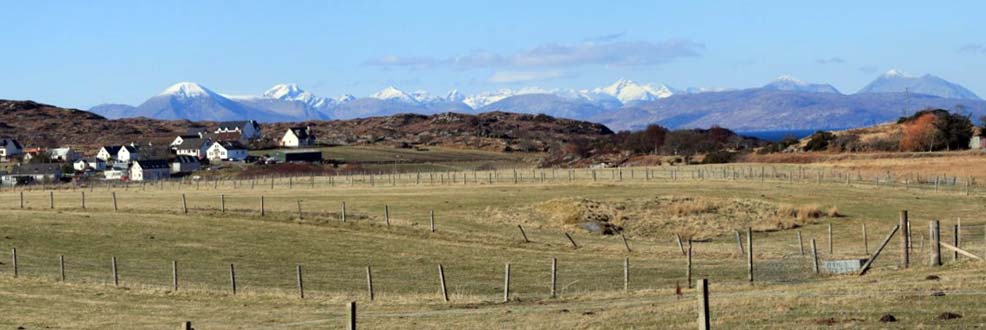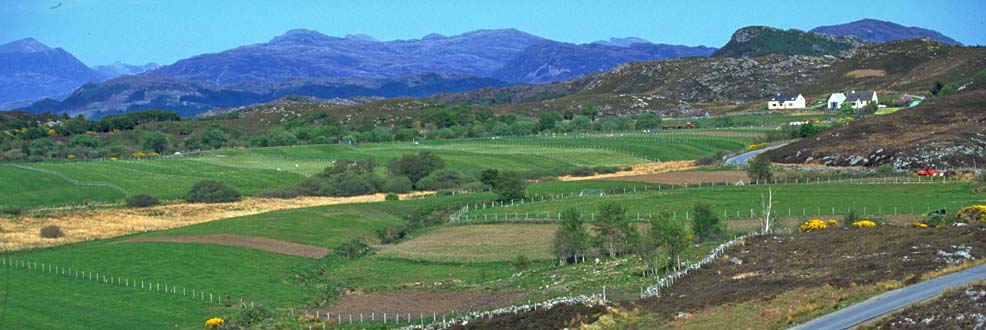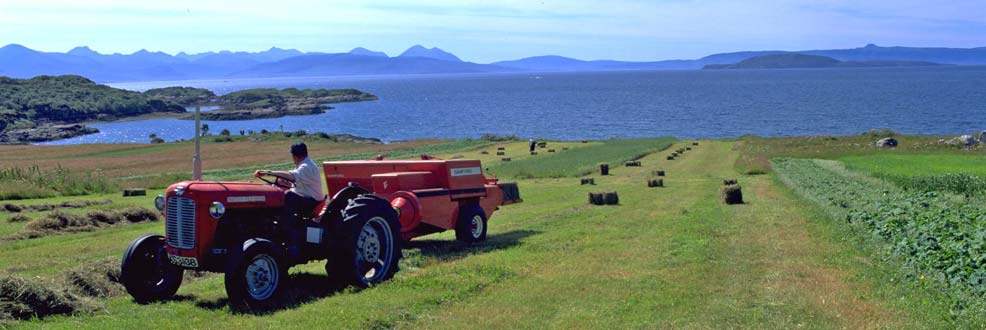Background to the Course
The Crofting Year is a National Progression award in Crofting which gives young people the opportunity to experience real-life situations on a working croft. Over the two years of the course they have the opportunity to develop the wide range of practical skills that are vital for any crofter. They receive expert guidance and training from the Crofter/Tutor in the field and this is backed up in the classroom by the Teacher/Tutor.
In addition to the many practical skills that will be experienced, time is spent gaining an understanding of the history of crofting as well as the place of crofting in the local community and also the regulation of crofting. Opportunities for diversification are also considered and the intimate relationship with the local ecology and the issue of sustainability is investigated. Above all, the young people are given the opportunity to experience crofting first hand and to develop a passion for this way of life. While many of them will become crofters themselves, not all the students will go on to work the land, however all of them will gain a much better understanding and appreciation for the place of crofting in Scotland.
The following is an extract from the Scottish Crofting Federation website:
What crofting is and why it is valuable
Crofting is a unique social system that stems from the Highland clearances, in which small-scale food production and care of the environment plays a unifying role. Although crofting refers to the principle of living on and working a small agricultural holding, crofters usually also have other occupations contributing to their livelihoods and the rural economy (historically crofts were deliberately kept below self-sufficiency by landlords in order to oblige tenants into tied labour). In short crofting is a way-of-life that is intrinsically linked to the land.
Crofting also plays an important part in shaping the landscape, enhancing the natural environment, the cultural heritage and social economy of the Highlands and Islands of Scotland. It sustains marginal and fragile rural populations and encourages the unique bond between people and the land.
The varied landscape created by individual crofts and the extensive practices in crofting have supported a wide variety of wildlife habitats and assisted in the retention of endangered native wildlife species.
There are over 17,700 crofts in the Highlands and Islands of Scotland and over 12,000 crofting households representing about 30,000 family members. Crofting households represent around 30% of households on the mainland Highlands and up to 65% of households in Shetland, the Western Isles and Skye.
Crofts form a unique tenure system that goes back over 200 years. Approximately 2000 are owner occupied but the majority remain tenanted. Approximately 25% of the land mass of the Highlands and Islands is under crofting tenure – which comprises over 15% of the land mass of UK.
Land use in the crofting counties is constrained by climate, soils and topography. Agriculturally, virtually all of the land in the Highlands and Islands is classified as Severely Disadvantaged in terms of Less Favoured Area Directive.
The existence of crofting today is the result of a hard won fight by previous generations of crofters. It has survived a turbulent past to seize the opportunities of today, to build a secure and confident future.
Crofting embodies the principles of sustainability, diversification, co-operation, entrepreneurialism and community, where the people share a common vision for the common good. It has a vital role in the agricultural, social, environmental and economic aspects of Scottish rural development and is central to sustaining communities in remote and peripheral areas.
The value of crofting both to the human communities within the crofting counties and also to the natural environment should not be underestimated and the role of this course in encouraging young people to become crofters themselves may be vital in the future.
Crofting is very closely associated with culture and with history and these are covered within the course, however it is important that this course should be forward looking and should not over-emphasize these aspects. There are many challenges facing young people in the future, both economically and environmentally and for some, crofting can provide an exciting way of developing sustainable, local food enterprises that would allow them to continue to live and work in their local communities.











